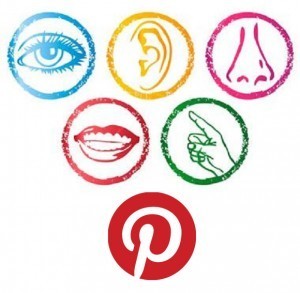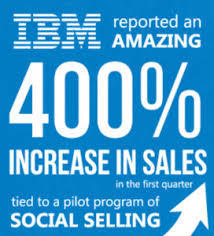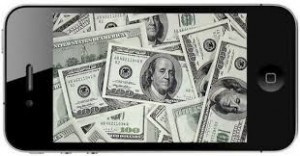Erik Qualman's Blog, page 611
February 20, 2014
Four Reasons Why Happiness Is Changing Social Media

Some of you may have seen the 100 Happy Days challenge that is spreading like butter on toast through social media. The challenge is a call to action for those of us whose lives are scheduled from the time we take up until the time we go to bed: do we have time to be happy? A happiness challenge may seem like a simple strategy, but 100 Happy Days has found a niche that makes them successful in engaging with social media users all over the world. Here’s how:
1. 100 Happy Days weeds out negative social media “noise”. While social media can sometimes cause FOMO (fear of missing out) or the negative effects of watching someone else’s “highlight reel” while sitting on your couch, the 100 Happy Days challenge is having a positive effect on social media users. This is different from the frequent venting or cyber-bullying that we see on a daily basis in our social media spheres.
2. 100 Happy Days has no boundaries. There is no need for vivid description, captions, or even translation. 100 Happy Days is a universal challenge that applies to people all over the world. Just one scroll through the #100happydays hashtag on Instagram shows how over one million different people interpret the meaning of this word, and it universalizes happiness for everyone from India to the Philippines.
3. It provides actual benefits to participants. 100 Happy Days claims that participants who complete the challenge become more optimistic about their lives, start receiving more compliments, and (believe it or not) fall in love. Regardless of whether or not you believe their claims, the challenge encourages its participants to find happiness in small things and appreciate the present moment. Even on a stressful day, I take pause for a moment or two and look around me to showcase simple things: my outfit for the day, successful DIY projects, books I am reading, and even a piece of art.
4. It’s not a competition. Since starting the challenge, I’ve seen more interaction on my personal social media outlets and have noticed a number of my friends taking on the pledge, making this an encouraging environment for sharing the positive. Instead of humble bragging about how great my life is, 100 Happy Days allows me to channel my happy thoughts into one post per day, focusing on the simple things that bring me happiness.
Overall, 100 Happy Days provides us with an innovative example of how to use social media to create positive social interaction among users. Instead of being branded as a photo contest where the photo with the most “likes” wins and the others lose, the challenge makes a positive connection to the user and validates their activity on social media. Even more interesting: there is no specific brand, company, or account attached to 100 Happy Days. The challenge operates as an organic movement rather than a branded one, moving quickly through feeds all over the world. It’s a sign that times are changing, and our corporate and personal brands on social media need to take note: happiness is catching. What are you doing to highlight the positive in your social media use? How can happiness play a role in what we are already doing to promote our cause, organization, or personal brand?
[image error]
February 19, 2014
Consumers Are Not Shy, They Want Mobility

As a business owner, does it seem like most customers you come in contact with wanted your product yesterday and not today or tomorrow?
As it turns out, more and more consumers are turning to mobile devices to help them with their shopping needs. With that in mind, are you prepared for the mobile onslaught or are you prepared to lose potential sales because your mobile efforts are not up to speed?
A recent report from IBM points out that the highest number of online orders via mobile devices for Christmas was placed by iOS users as opposed to Android users.
The report showed that 23 percent of Christmas online sales in the U.S. came through iOS devices, with just over 4.5 percent via Android devices. In looking at overall online traffic, iOS devices scored a 32.6 percent to 14.8 percent victory over Android.
Are You Touting Your Mobility?
Just as you would promote your products and/or services, the same must be true if you allow shoppers to use mobile devices in doing business with you.
For those businesses that are not already doing this, they are likely to find themselves behind the eight ball for starters.
So, what are some of the better ways to show consumers that you get their mobile needs?
Spread the Word
Among some of the best ways to reach out and show you understand that consumers prefer iOS for mobile shopping include:
Customer surveys – These are a great tool for getting feedback from current and potential customers. So, how do you go about doing a survey that consumers will actually partake in? If you’re like many business owners, you know that many consumers don’t have enough time in their daily lives for work and family, let alone filling out a survey. Make them want to complete the survey by giving them an incentive. They can be registered for contest prizes, discounts and more;
Advertising – The old standby still remains advertising, though more and more small business owners have had to scale back their advertising dollars in recent years for a variety of reasons. According to a recent IBM Global CEO Study, nearly 90 percent of CEO’s noted that “getting closer to customers” was their number one business goal during the next five years. In order to make paid advertising more effective, it behooves those running companies to spend more time getting a few good ads that will capture audience attention than sending out multiple ads that don’t. Bottom line, spend a little extra on making one ad count over releasing a number of ads that do not;
Social media – Last but not least, social media is a great tool to promote your company’s mobile offerings. Best of all, it is essentially free to use, though time and effort are certainly required. Remember that earlier mention of contests and prizes? You can use your company’s Facebook fan page for just that. If you can afford to, you can even give away mobile gadgets as prizes. Face it, the more incentive consumers have to come to your social site or sites, the more traffic you will draw over time. You should also have a presence on Google+, which has since surpassed Twitter as the number two social network (Facebook leads the way). With that said, that does not mean you should not have a presence on Twitter or move away from your current Twitter offerings. Twitter is still a powerful social tool, especially in the celebrity and business world. Using the site to promote your mobile devices simply makes sense. You can include links to mobile studies, new mobile gadgets and more. Lastly, are you using Vine in your social campaigns? You may think that a mere 6 seconds is not enough time to tell your mobile story, but much can be done in that time to promote your mobility.
With more and more consumers going the mobile route, are you at the other end to give them what they want?
If not, they won’t be shy about going over to your competition who gets the mobile way of thinking.
Photo credit: mactrast.com
[image error]
Las Vegas Entrepreneurs Roll the Dice with Social Media

 Las Vegas Stats and Facts found that almost 40 million visitors came to Las Vegas in 2012. There were also more than 21,000 conventions held in Las Vegas in that year alone.
Las Vegas Stats and Facts found that almost 40 million visitors came to Las Vegas in 2012. There were also more than 21,000 conventions held in Las Vegas in that year alone.
Even though the numbers are high, Las Vegas has taken a hit in recent years due to the economy. Hotels, restaurants and clubs are all turning to social media to gain and attract new business.
How social media is used in Las Vegas
Las Vegas hotels have it easy when it comes to social media.
Every weekend (at least), there’s an event going on. Hotels can promote clubs, restaurants, future concerts, comedy shows and all sorts of other activities on social media to attract new visitors.
According to a report from Skift.com, most Las Vegas hotels that are on the strip are actually doing much better on social media than global hotel brands, such as Hilton or Hyatt. Specific hotels that are doing well include Mandalay Bay, Cosmopolitan, MGM Grand, Palms Casino and Aria Las Vegas.
Las Vegas hotels are aware that different social media sites are good for attracting different clienteles.
Overall, Facebook has the largest and most diverse audience, so it’s good for general advertising and promoting. People who tend to be “in the know” use platforms such as Twitter, Instagram and Vine. Typically, those three platforms will attract the younger, hipper travelers, so the hotels need to incorporate that into their marketing plan as well.
The Light Group, founded by Andrew Sasson, manages and operates 22 food and beverage properties in Las Vegas.
The company is a prime example of just how important social media is in today’s world. They’re active on Instagram, Twitter and Facebook, constantly appealing to a variety of different clienteles and succeeding at bringing in new business.
How to engage customers
Twitter is the main social media platform for providing top-notch customer service.
If a customer is unhappy with a particular club or restaurant, for example, they’re more likely to turn to Twitter than to call the 800 number. Simply Measured found that almost all brands are on Twitter and 30% of them are dedicated to providing a quick response when it comes to customer service. T0 showcase that point, the Cosmopolitan ranks number one in Vegas hotels for best customer service on Twitter.
Hotels and restaurants can also engage customers on social media by hosting giveaways, promotions and deals on rooms and food.
Such businesses can have people enter a contest by retweeting the contest promotion, which is easy for the user to do plus it gets the hotel or restaurant in front of millions of potential customers.
The more people Las Vegas hotels, entrepreneurs, restaurants and clubs can get to notice them, the more interest they’re going to accrue and the more sales and business they’re going to generate.
More and more, social media is coming up a winner when Las Vegas-based businesses roll the dice.
Photo credit: lasvegas360.com
[image error]
Tips for your Pinterest Strategy
[image error]
When covering your social media strategy, it’s highly possible that you may over look Pinterest in your outreach efforts.
BIG MISTAKE!
An effective Pinterest strategy could make a huge difference to your brand. In fact, according to Piqora, on average, a pin generates 78 cents in sales. (Up 25% from Q4 in 2012.)
Pinterest operates like an online pin board. Users see something they like and ‘pin it’ to their own board, which can be assigned to separate projects and themes. It’s a great, visual platform and really lends itself to mood boards, offering a creative way to share ideas.
When you’re building your Pinterest strategy, there are some points you most certainly should be considering in order to make your efforts as effective as possible:
1.) Check the Source Before You Pin
When re-pinning, click before you repin to see if pins are sourced to a legitimate website. If content has been “re-sourced” with a false URL to another site, don’t repin it – report it or leave a comment. Give credit where credit is due!
2.) Know Your Competition.
What are your competitors doing on Pinterest? Get inspiration from some of their boards. Obviously you want to be unique but it’s always a good starting point to take a look around at what others are doing. Especially if you are just getting on Pinterest for the first time.
3.) Be Social
If you want build relationships and get noticed, be social. Treat it just like any other social media platform. Comment and like posts, just as you would on Twitter, Facebook et al., use names and tags, and use hashtags to highlight keywords. By using names and tags, you will be a step ahead of the large majority of Pinterest users with respect to engaging with other users.
4.) Promote Creatively
While Pinterest began as a platform to organize and share the things we love, it has huge potential for promotions, competitions and selling products. As always, the key is to add value and engage. Promote creatively and respectfully (and check Pinterest’s Terms & Conditions).
5.) Add a Watermark.
When pinning original content, consider adding a watermark of your website or logo to your image, to preserve pin integrity. This way the image will always stay connected to your website, and will continue to promote your brand, no matter what!
With a bit of time and a dash of patience, you could well be on your way to creating a successful Pinterest strategy for you and your brand!
[image error]
How to Use Pinterest to “Pin Down” Your Target Audience

 The number of social media outlets found on the market today is astounding, leaving many business marketers to give up the nostalgic idea that a customer’s experience is based on face-time alone. With the advent of the internet and the introduction of social media, it just doesn’t pay to not sell your company online.
The number of social media outlets found on the market today is astounding, leaving many business marketers to give up the nostalgic idea that a customer’s experience is based on face-time alone. With the advent of the internet and the introduction of social media, it just doesn’t pay to not sell your company online.
Recent studies indicate that women are becoming more and more involved in the financial and spending decisions of their families. This means, of course, marketing efforts should be targeted more towards the powerful female shopper. In his recent article, “Holding the Purse Strings,” Ibrahim Ibrahim noted that, “…brands… need to adopt more matriarchal values instead of patriarchal ones. Shopping experiences need to be multi-dimensional, engage all the senses and be based on stories crafted to make more sense of information.”
With this notion in mind, it seems a pertinent and necessary action for smart and serious business marketers to look at social media as a tool for creating content for women shoppers. One of the greatest avenues for this initiative today can be found in the social media phenomenon that is Pinterest. Here are a few tips for using Pinterest to “Pin Down” your target audience:
1. Invest in social media branding. You want to make sure you are consistent across all social media platforms, not just on Pinterest. As pins are a great way to link back to your other content, you don’t want to confuse your potential customer with an appearance that is inconsistent. By sticking to similar color schemes, logos and wording, you should be able to create an online persona that will win over your customers and assure them you are who you say you are.
2. Become familiar with infographics. People aren’t interested anymore in reading tons of unnecessary information. One of the best tools you can use for getting information across in a succinct, friendly and attractive manner is a powerful infographic. If you aren’t sure what an infographic is and need more information on how to create a good one, check out this infographic on mashable.com.
3. Be relevant. Understand what it is that makes your potential customers “tick.” If you are targeting a specific geographical region, take some time to research what’s going on in that area. You should also pay attention to the time of year and gear your information and images to items that are relevant in the here and now. Use your pins to show how you can be of service to consumers right now and in the near future, but try to keep descriptions brief.
4. Build your following. Learn to navigate the system by seeing what others are pinning. Start to “follow” high-profile pinners and businesses who could be potentially useful to your cause. Look for “like” items or services similar to yours and model yours after the ones who are doing it well. Try using guest pinners to promote your content on their own pin boards. Cynthia Sanchez, from socialmediaexaminer.com, has some great tips for building up a successful following.
By investing in social media and the female shopper, your business will be able to expand its reach and turn online browsing into online buying.
[image error]
February 18, 2014
Question For The C-Suite: What’s Your Capacity For Change?

 Sales is the nucleus to every business. And sales models these days are undergoing a tidal wave of change. Buzz words like Social Sales, Social Selling or Sales 2.0 reflect the change social media is having on the way people do business. What do CEOs think about Social Sales? My experience tells me they don’t think about it at all. When it comes to sales models, they comfortable with the status quo and their sales teams are selling like it’s 1999. It’s time for change.
Sales is the nucleus to every business. And sales models these days are undergoing a tidal wave of change. Buzz words like Social Sales, Social Selling or Sales 2.0 reflect the change social media is having on the way people do business. What do CEOs think about Social Sales? My experience tells me they don’t think about it at all. When it comes to sales models, they comfortable with the status quo and their sales teams are selling like it’s 1999. It’s time for change. 
“Adapt or die”, as Oakland A’s General Manager, Billy Beane (played by Brad Pitt) said in the movie Moneyball. For Billy Beane it was all about changing the game. Are you changing yours?
There are many in the c-suite who aren’t adapting to Social Selling. I know, I’ve met with them, their objections are many: It’s for teenagers, it’s for celebrities, my buyer (CXO) isn’t there, it’s for B2C, for women, for students, for retail. While some of this is true, that’s just the tip of the iceberg, and it’s a BIG iceberg.
Is it because of the age demographic ? The average age of a CEO in 2013 was 55 and perhaps that’s the biggest hurdle to overcome.
Is it because the c-suite is also risk averse .? They are quick to point out examples of social media gone wrong.
Perhaps social sales is an ambiguous term and not well defined within their sales and marketing teams. Many are familiar with terms such as tweets, likes, posts and updates but how does that relate to social selling? How it’s used in B2B? What value it can bring?
Is it time. Who has extra time to learn about it, apply it, manage it and measure it?
Or, is it just easier to ignore it or believe the myths?
It is with those obstacles in mind that I pose this question: as the CEO or VP of Sales, what is your capacity for change? Are you comfortable with the status quo? The answer to those questions probably reveal your attitude towards Social Media for #B2B
comfortable with the status quo? The answer to those questions probably reveal your attitude towards Social Media for #B2B
Sales 2.0 requires change. Change in thinking, in communication, change in approach and behavior, change in the ROI model, change in direction, change in vision, sales philosophy, time management, change in sales training, in company and employee transparency and an overall change in mindset. Change is the obstacle.
 Todays technology provides every company the ability to listen, connect and engage your target audience, in real time and provide them value online. Social media s an incredible tool to build your business. First you build the strategy to meet the objective, then define the tactics to execute the strategy and finally apply the tools and applications to measure the effectiveness of your efforts. And voila! Results will follow…if you have the capacity for change.
Todays technology provides every company the ability to listen, connect and engage your target audience, in real time and provide them value online. Social media s an incredible tool to build your business. First you build the strategy to meet the objective, then define the tactics to execute the strategy and finally apply the tools and applications to measure the effectiveness of your efforts. And voila! Results will follow…if you have the capacity for change.
Social Selling provides access to customers, media, vendors, competitors, referrals, industries, markets, governments, institutions and just about anything else you can think of: AND, it is sustainable and profitable. Not because I say so, because your peers say so. Ask them. CEOs on Twitter. CMOs on Twitter. CIOs on Twitter. CFOs on Twitter. CTOs on Twitter.
I defined Social Media in my book, Taking The Mystery Out of Social Media, as People talking about things they are passionate about and telling their Story:
People as in customers, entrepreneurs, students, and employees.
Passion as in a love for their product, service offering, customers, careers, and more. Story as told through text, photos, images, videos, info-graphics, resumes, testimonials, profile pages, bios, blogs, etc. At the heart of social selling is “story”. Story is the best way to communicate a message.
Story is the best way to connect with your audience emotionally and when that happens, you get them to act. We are wired for story. It’s in our DNA. Good story makes for great business.
Social Selling requires you to tell your story, personally and professionally. It’s a platform to tell the story of your customers’, employees’, your company, your industry, your products and so on. Your story is your brand and Building Your Brand Builds Value For Your Brand.
Many companies have some social presence or activity online. But social selling requires a Strategy. A strategy that’s well thought out, well executed and well measured. Simply doing social media to do it is a waste of time. Finally, social selling requires authenticity and transparency. Let your audience know who you are, what you do and why you do it. People don’t buy what you do, they buy why you do it. At first, this can be awkward and uncomfortable. It’s supposed to be. It’s what sets those CEOs who embrace it apart from those who put their head in the sand and ignore it. The audience has to believe that you are real. No spin, no PR, no “buy our product” or “like” our Facebook page because we say so.
What results can Social Sales model deliver? Here are a few examples:

1. Increase sales revenue by increasing the engagement with your target audience in such a way that it will get them to “act”
2. Decrease the cost of acquisition of customers to improve your bottom line and enable you to manage to budget
3. Reduce marketing costs (direct mail, collateral material, trade shows, etc) by cross promoting your product and service offerings via social network engagement
4. Reduce your sales cycle and accelerate company growth
5. Provide an exceptional customer, vendor and employee experience where brand champions are created across the board that results in others telling your company’s story for you. Think Disney, Zappos, Chick-fil-A
6. Gain competitive intelligence that you can leverage to differentiate your product, services and customer experience
7. Hire top tier talent in real time which adds value to your organization, reduces your talent acquisition costs and increases employee satisfaction and retainment.
8. Implement a Social CRM program that tracks account activity, customer engagement, evaluates website traffic and conversions and enables you to measure the effectiveness of your online efforts. What gets measured gets managed.
9. Build YOUR brand and define how you are perceived online. Build a strategy that gets you noticed with your target audience. The only thing better than being impressed when they do business with you is being impressed well before they do business with you. Leverage “Social” to be an effective, interactive business and branding tool
10. Build relationships with the press., i.e. trade journals, industry publications, bloggers and journalists at targeted media outlets
Another way to look at Social Sales is what I call the “The possibilities of 10″
What is a 10% increase in sales worth to your business? What’s a 10% reduction in marketing or customer acquisition costs worth? How would 10 more customers impact your business? With well over 2 billion people on the world wide social web, do you think 10% increase in sales revenue or 10% decrease in marketing costs is possible, probable or a reasonable expectation to have?
Social Selling is an online strategy that continues the conversations you have every day with a target audience. Conversations build relationships, relationships build trust and trust builds your business. You can buy leads, CRM tools, marketing collateral and so on but you can’t buy relationships and that’s the nucleus of a Social Selling model.
Who’s delivering results with a Social Sales model in B2B?
Jill Rowley is changing the game at Oracle. Oracle Sales Professionals Use Personal Social Media Accounts To Sell it’s Products
She’s not alone:
IBM Turns Sales Staff Social Media Savvy
Intel Uses Social Media To Transform The Way They Do Business
Cisco Social Media B2B Case Study
FedEx Adds Board Member with Social Network Background
Does your CMO embrace Social Media? David Packard, the iconic co-founder of Hewlett Packard, famously said, “CEOs who leave marketing to the marketing department are not doing themselves, their investors, or their employees any favors”
Josh James, Domer Founder and CEO, wrote a fantastic piece in Forbes Magazine, CEOs Afraid of Going Social Are Doing Shareholders A Massive Disservice.
Are facts our friends? See what CEOs are saying about social engagement in Ekatrina Walter article, Want to Prove Your Company is Human? Get Them To Tweet
 From the Wall Street Journal ”Some firms are pairing individual leaders with young mentors, while others are spending hundreds of thousands of dollars to teach the entire c-suite how to use social tools .” Hundreds of thousands of dollars? What do those CEOs know that the others don’t? Bosses Learn Not To Be So Clueless.
From the Wall Street Journal ”Some firms are pairing individual leaders with young mentors, while others are spending hundreds of thousands of dollars to teach the entire c-suite how to use social tools .” Hundreds of thousands of dollars? What do those CEOs know that the others don’t? Bosses Learn Not To Be So Clueless.
So, what’s your capacity for change? Are you inclined to adapt or adopt a Social Sales strategy? We’d welcome the opportunity to present to your leadership team if you’d like to learn more about “the why”. We’d also like to interview readers of this blog for an upcoming book on the C-Suite and Social Sales. Please contact adam@socialbrandu.net if you’d be willing to participate and provide your feedback.
At Social Brand U, our passion lies in partnering with CEOs who want to build a productive Social Selling model that transforms strategy into results. Our capacity for change is unlimited, unwavering, profitable and exciting! What’s your capacity for change?
Sincerely,
Adam M. Karwoski,
Ruined For Ordinary
Social Brand U, LLC
@adamkarwoski
[image error]
Question For The C-Suite: What’s Your Capacity For Change?
 Sales is the nucleus to every business. And sales models these days are undergoing a tidal wave of change. Buzz words like Social Sales, Social Selling or Sales 2.0 reflect the change social media is having on the way people do business. What do CEOs think about Social Sales? My experience tells me they don’t think about it at all. When it comes to sales models, they comfortable with the status quo and their sales teams are selling like it’s 1999. It’s time for change.
Sales is the nucleus to every business. And sales models these days are undergoing a tidal wave of change. Buzz words like Social Sales, Social Selling or Sales 2.0 reflect the change social media is having on the way people do business. What do CEOs think about Social Sales? My experience tells me they don’t think about it at all. When it comes to sales models, they comfortable with the status quo and their sales teams are selling like it’s 1999. It’s time for change. 
“Adapt or die”, as Oakland A’s General Manager, Billy Beane (played by Brad Pitt) said in the movie Moneyball. For Billy Beane it was all about changing the game. Are you changing yours?
There are many in the c-suite who aren’t adapting to Social Selling. I know, I’ve met with them, their objections are many: It’s for teenagers, it’s for celebrities, my buyer (CXO) isn’t there, it’s for B2C, for women, for students, for retail. While some of this is true, that’s just the tip of the iceberg, and it’s a BIG iceberg.
Is it because of the age demographic ? The average age of a CEO in 2013 was 55 and perhaps that’s the biggest hurdle to overcome.
Is it because the c-suite is also risk averse .? They are quick to point out examples of social media gone wrong.
Perhaps social sales is an ambiguous term and not well defined within their sales and marketing teams. Many are familiar with terms such as tweets, likes, posts and updates but how does that relate to social selling? How it’s used in B2B? What value it can bring?
Is it time. Who has extra time to learn about it, apply it, manage it and measure it?
Or, is it just easier to ignore it or believe the myths?
It is with those obstacles in mind that I pose this question: as the CEO or VP of Sales, what is your capacity for change? Are you comfortable with the status quo? The answer to those questions probably reveal your attitude towards Social Media for #B2B
comfortable with the status quo? The answer to those questions probably reveal your attitude towards Social Media for #B2B
Sales 2.0 requires change. Change in thinking, in communication, change in approach and behavior, change in the ROI model, change in direction, change in vision, sales philosophy, time management, change in sales training, in company and employee transparency and an overall change in mindset. Change is the obstacle.
 Todays technology provides every company the ability to listen, connect and engage your target audience, in real time and provide them value online. Social media s an incredible tool to build your business. First you build the strategy to meet the objective, then define the tactics to execute the strategy and finally apply the tools and applications to measure the effectiveness of your efforts. And voila! Results will follow…if you have the capacity for change.
Todays technology provides every company the ability to listen, connect and engage your target audience, in real time and provide them value online. Social media s an incredible tool to build your business. First you build the strategy to meet the objective, then define the tactics to execute the strategy and finally apply the tools and applications to measure the effectiveness of your efforts. And voila! Results will follow…if you have the capacity for change.
Social Selling provides access to customers, media, vendors, competitors, referrals, industries, markets, governments, institutions and just about anything else you can think of: AND, it is sustainable and profitable. Not because I say so, because your peers say so. Ask them. CEOs on Twitter. CMOs on Twitter. CIOs on Twitter. CFOs on Twitter. CTOs on Twitter.
I defined Social Media in my book, Taking The Mystery Out of Social Media, as People talking about things they are passionate about and telling their Story:
People as in customers, entrepreneurs, students, and employees.
Passion as in a love for their product, service offering, customers, careers, and more. Story as told through text, photos, images, videos, info-graphics, resumes, testimonials, profile pages, bios, blogs, etc. At the heart of social selling is “story”. Story is the best way to communicate a message.
Story is the best way to connect with your audience emotionally and when that happens, you get them to act. We are wired for story. It’s in our DNA. Good story makes for great business.
Social Selling requires you to tell your story, personally and professionally. It’s a platform to tell the story of your customers’, employees’, your company, your industry, your products and so on. Your story is your brand and Building Your Brand Builds Value For Your Brand.
Many companies have some social presence or activity online. But social selling requires a Strategy. A strategy that’s well thought out, well executed and well measured. Simply doing social media to do it is a waste of time. Finally, social selling requires authenticity and transparency. Let your audience know who you are, what you do and why you do it. People don’t buy what you do, they buy why you do it. At first, this can be awkward and uncomfortable. It’s supposed to be. It’s what sets those CEOs who embrace it apart from those who put their head in the sand and ignore it. The audience has to believe that you are real. No spin, no PR, no “buy our product” or “like” our Facebook page because we say so.
What results can Social Sales model deliver? Here are a few examples:

1. Increase sales revenue by increasing the engagement with your target audience in such a way that it will get them to “act”
2. Decrease the cost of acquisition of customers to improve your bottom line and enable you to manage to budget
3. Reduce marketing costs (direct mail, collateral material, trade shows, etc) by cross promoting your product and service offerings via social network engagement
4. Reduce your sales cycle and accelerate company growth
5. Provide an exceptional customer, vendor and employee experience where brand champions are created across the board that results in others telling your company’s story for you. Think Disney, Zappos, Chick-fil-A
6. Gain competitive intelligence that you can leverage to differentiate your product, services and customer experience
7. Hire top tier talent in real time which adds value to your organization, reduces your talent acquisition costs and increases employee satisfaction and retainment.
8. Implement a Social CRM program that tracks account activity, customer engagement, evaluates website traffic and conversions and enables you to measure the effectiveness of your online efforts. What gets measured gets managed.
9. Build YOUR brand and define how you are perceived online. Build a strategy that gets you noticed with your target audience. The only thing better than being impressed when they do business with you is being impressed well before they do business with you. Leverage “Social” to be an effective, interactive business and branding tool
10. Build relationships with the press., i.e. trade journals, industry publications, bloggers and journalists at targeted media outlets
Another way to look at Social Sales is what I call the “The possibilities of 10″
What is a 10% increase in sales worth to your business? What’s a 10% reduction in marketing or customer acquisition costs worth? How would 10 more customers impact your business? With well over 2 billion people on the world wide social web, do you think 10% increase in sales revenue or 10% decrease in marketing costs is possible, probable or a reasonable expectation to have?
Social Selling is an online strategy that continues the conversations you have every day with a target audience. Conversations build relationships, relationships build trust and trust builds your business. You can buy leads, CRM tools, marketing collateral and so on but you can’t buy relationships and that’s the nucleus of a Social Selling model.
Who’s delivering results with a Social Sales model in B2B?
Jill Rowley is changing the game at Oracle. Oracle Sales Professionals Use Personal Social Media Accounts To Sell it’s Products
She’s not alone:
IBM Turns Sales Staff Social Media Savvy
Intel Uses Social Media To Transform The Way They Do Business
Cisco Social Media B2B Case Study
FedEx Adds Board Member with Social Network Background
Does your CMO embrace Social Media? David Packard, the iconic co-founder of Hewlett Packard, famously said, “CEOs who leave marketing to the marketing department are not doing themselves, their investors, or their employees any favors”
Josh James, Domer Founder and CEO, wrote a fantastic piece in Forbes Magazine, CEOs Afraid of Going Social Are Doing Shareholders A Massive Disservice.
Are facts our friends? See what CEOs are saying about social engagement in Ekatrina Walter article, Want to Prove Your Company is Human? Get Them To Tweet
 From the Wall Street Journal ”Some firms are pairing individual leaders with young mentors, while others are spending hundreds of thousands of dollars to teach the entire c-suite how to use social tools .” Hundreds of thousands of dollars? What do those CEOs know that the others don’t? Bosses Learn Not To Be So Clueless.
From the Wall Street Journal ”Some firms are pairing individual leaders with young mentors, while others are spending hundreds of thousands of dollars to teach the entire c-suite how to use social tools .” Hundreds of thousands of dollars? What do those CEOs know that the others don’t? Bosses Learn Not To Be So Clueless.
So, what’s your capacity for change? Are you inclined to adapt or adopt a Social Sales strategy? We’d welcome the opportunity to present to your leadership team if you’d like to learn more about “the why”. We’d also like to interview readers of this blog for an upcoming book on the C-Suite and Social Sales. Please contact adam@socialbrandu.net if you’d be willing to participate and provide your feedback.
At Social Brand U, our passion lies in partnering with CEOs who want to build a productive Social Selling model that transforms strategy into results. Our capacity for change is unlimited, unwavering, profitable and exciting! What’s your capacity for change?
Sincerely,
Adam M. Karwoski,
Ruined For Ordinary
Social Brand U, LLC
@adamkarwoski
[image error]
Automakers Using Social Campaigns to Drive Off With New Business

 Car companies are turning to social media to gain customers, keep current customers happy and grow their business.
Car companies are turning to social media to gain customers, keep current customers happy and grow their business.
If you’re a consumer, turning to social media before buying a car would be a wise decision so you can read reviews and hear what others have to say about your car of choice. You can also see if the car company is offering any sort of promotion or special via social media.
As a car company, having a social media campaign and budget has become a necessity – no longer is it considered a ‘luxury’ for any type of business.
Twitter Pulling Forward
Social networking site Twitter found that its users are more than twice as likely to buy a new car as the average American household is, according Twitter Inc.
A Datalogix study found that of those Twitter users, the ones that retweet or reply to an auto advertisers’ promoted tweet have a 32% higher chance of buying a new vehicle than those that don’t.
Another way that automakers are using social media is by means of customer service.
About one-third of social media users prefer to use social media, versus the 800 number, to address customer service issues, according to The Nielsen Company. Certain customers expect this type of service, and do not want to work with companies who do not utilize social media.
Ford is one of the auto brands that are really pushing excellent customer service skills via social media. They realize that the faster they can respond to questions or complaints and provide feedback, the more satisfied their customers will be.
And let’s not forget about safety.
Researchers at Virginia Tech’s Pamplin College of Business believe that social media can be incredibly useful when it comes to providing information about vehicle safety or any defects of the car.
Customers can find relevant information with a quick internet search; and car manufacturers can see what customers are complaining about quickly and efficiently, making sure the problem gets resolved as soon as possible.
Look at the Numbers
We know auto industries are using social media, but just how effective are they with their campaign strategies?
Unmetric, a social media analysis company took a close look at each car companies’ social media strategy.
Audi ranks number one for Facebook and Twitter; Volkswagen ranks the best for YouTube and Pinterest. Ford has the most Facebook fans, but the two companies that generated the most user engagement on Facebook were Audi and Mercedes.
When it comes down to it, why you buy a car will not be strictly because you like the social media campaign, it will be because the price was right, the timing was right and you really like what the car has to offer. Social media campaigns can help get you there, though.
Ford’s Ford Fusion campaign collaboration with the hit TV show New Girl took online watchers directly to the company’s website.
Sales following the month after the episode aired increased by 6%. Other top-selling campaigns include Toyota’s use of Pinterest, Chevrolet’s use of video social media platform Vine, and Volkswagen’s successful YouTube campaign.
Buying a car is a major purchase for most U.S. households.
Being well-informed and doing your research, by means of the internet, social media and talking with others, will ensure you get the best car for your money.
Photo credit: Huffingtonpost.com
[image error]
17 Digital Reputation Resources: The Ultimate Guide to Your Digital Footprint

 The explosion of mobile and social technologies means that we have to live as if our mother, boss, coach and enemies are watching us…because they are. Success is a choice in this digital age, and so producing and protecting a digital reputation is imperative.
The explosion of mobile and social technologies means that we have to live as if our mother, boss, coach and enemies are watching us…because they are. Success is a choice in this digital age, and so producing and protecting a digital reputation is imperative.
You could choose the path of technology avoidance, but it would be increasingly difficult to succeed without these digital tools and your reputation could still be compromised. Regardless if you elect to use social media or have a digital presence, people will be looking for you online. When you do not create and manage your digital reputation, you allow others to do this for you. Would you rather have influence over your reputation, or give that control to others?
Research indicates that 92% of children under the age of two already have a digital posting about them. Yes, what happens offline stays online. This is a fundamental shift in society. It is a shift that many of us, from schoolteachers to CEOs, have failed to grasp.
Below is a list of posts, resources, apps and other digital tools that will help you build a reputation on the web of which you can be proud. Throughout this post you’ll also find excerpts from Erik Qualman’s new book, What Happens in Vegas Stays on YouTube. I would strongly recommend this book for any person/company that cares about their reputation (both online and offline).
Developing Your Brand:
Determine what you want to stand for as an individual, a business, a team or a family. Whether you are a sports team or a small business, you need to know your identity before you can achieve success. Keep your branding super simple. Steve Jobs was proud of the things he and Apple decided NOT to do. If you try to stand for everything, then you stand for nothing.
“A man is the sum of his actions, of what he has done, of what he can do, nothing else.”
— Gandhi
1. Personal Branding and Career – Success with a Core Purpose Statement | The Brainzooming Group http://buff.ly/1jCvzIC
2. Reputation Management: Digital Integrity vs. Digital Reputation | Socialnomics http://buff.ly/1dIiqNG
3. Branding Strategy Insider | 50 Things Successful Brand Managers Know http://buff.ly/1fa2Iwv
4. Defining What You Are, And Are Not http://buff.ly/1fa4AFu
5. How to Determine The Kind of Image You Want to Project and The Tone You Want To Use Online | Social Media Impact http://buff.ly/1geNLWw
Being FLAWsome:
The world is a better place because of everyone’s imperfections. Admit and own your flaws either as an organization or as an individual and the world will think you are awesome. Being “Flawsome” is admitting that you aren’t perfect. You are awesome because of your flaws. Flawsome is described as owning your mistakes and taking the necessary steps to correct them. It’s about turning a negative into a positive (such as making digital lemonade out of digital lemons). Making a mistake as a business or as an individual is your opportunity to show customers and followers that you are awesome by caring enough to correct the flaw. 83% of customers liked or loved that a brand responded to a complaint on Twitter.Yet, 76% of people who complain on Twitter do not receive a response from the brand.
6. Twitter as a customer service tool – Confused.com case study | Socialnomics http://buff.ly/1geLoTD
7. Social Media Risks Are Real Not Managing Them is Irresponsible | Social Media Explorer http://buff.ly/1fa5W3c
8. How To Deal With Negative Comments on Facebook – Social Media Impact – Social Media Impact http://buff.ly/1fa7xpJ
9. Your Complete Social Media Disaster Response Guide | Inc. Magazine http://buff.ly/1geNbIf
Using Digital Tools:
Social media marketing is a vast landscape. When you decide it’s time you started making better use of social media to promote your small business, it’s easy to get distracted for hours looking at all the different social networks. That’s why using digital tools can help you manage multiple social networks, particularly when it comes to monitoring your digital footprint.
10. 5 Super-Easy Ways To Track Your Online Reputation #Socialstrategy – Social Media Impact http://buff.ly/1geMNK3
11. Top 10 SEO Reputation Management Tools Online | Social Media Today http://buff.ly/1geNnrd
12. Online Reputation Management: 4 Free Tools To Monitor Your Brand http://buff.ly/1fa8ePR
13. Free eBook: Digital Tools for the Small Business Manager | Socialnomics http://buff.ly/1fa8Q84
Teaching and Training Your Team:
When your employees, teammates or family members post something digitally, this will have a direct negative or positive reflection on them and you. Fool me once, shame on me; fool me twice, shame on you. When something negative occurs, you have nobody to blame but yourself, since you didn’t take the time to teach and train your team, employees or family. A great first step is to give them this book. By helping others, you are ultimately helping yourself. Here are some posts discussing how to best train your team as well as some multimedia/resources you might use in a training or classroom to discuss digital reputation.
“The task of the modern educator is not to cut down jungles, but to irrigate deserts.”
—C. S. Lewis
14. 7 Training Tips for your Social Customer Service Team | Sparkcentral http://buff.ly/1fa9Hpr
15. Free Socialnomics Lesson Plan: Showing our LOVE for educators | Socialnomics http://buff.ly/1geOR4C
16. My Digital Stamp: Erik Qualman at TEDxNashville |YouTube http://buff.ly/1fa9Vg
17. Infographic: How To Train Your Employees To Handle Your Social Media | Mindflash http://buff.ly/1faa96U
[image error]
How to: Build your Band of Brand Loyalists

It’s easy to find someone to sponsor your brand and your brand content, but to find someone who will do it without a paycheck, now that’s when you’re in the loyalist category. Loyalists are excited about news from the brand, new content put out, they follow them on social channels, they are advocates on behalf of the brand, and they are current customers. They’re the ones you can count on when shit hits the fan, and some mishap happens, or the brand is being bashed for something that was misunderstood by others. Those loyalists will speak up, they will stand behind the brand, and they will continue to be a customer. In turn, those loyalists will inspire others to consider the brand. Or at minimum, create some awareness that “this brand” is worth checking out.
So how do you create brand loyalists? There is no “follow this checklist” and you’ll have a band of loyalists at your door. It takes time, and it takes effort, and it’s different for each brand. However, there are some things that are important for each brand to consider as they figure out what works best for them.
Here’s a quick list to have in your back pocket at all times (but please don’t be fooled by the word, quick):
1. Transparency - Be transparent and honest about your brand. Either way the consumers will find out the truth, so why not tell it yourself. Brands like Toms may have it easy as their stories inspire others to act, give back, and truly love the brand. Others have it harder, but it doesn’t mean it’s impossible to tell your story in a way that impacts and connects others.
2. Have the best customer service ever - Customer service can make or break many customer relationships. Brands like Amazon have impeccable customer service to a point that they don’t question when something is wrong, but aim to fix the problem swiftly and make up for it. I remember one time when an item I purchased was delivered to the wrong location, I was so disappointed. Within 12 hours, it was in my hands due to their customer service help. Impressive.
3. Create Connections that Make an Impact - Customers don’t want to be treated as “just another wallet to take from.” They want to be appreciated. It can be as small as remembering their name when they walk into a store, or reaching out to them via a Tweet to say thank you. Nordstrom does a great job at this, when they say thank you whenever their mentioned by their followers on Twitter. It’s a small token, but it’s appreciated nonetheless. Whatever the effort, the effort is worth it to make a connection with your customers.
4. Give Value through Content - Providing value is a key component for any brand. Content is one way to go about that. For example, IBM has over 5 unique tumblr blogs, where they pump out different content on a daily or weekly basis. They are keeping their customers hungry for more – through consistent, quality, and fun content. It’s educational and entertaining – which is no easy feat! Take pointers.
5. Always be there - Your customers aren’t going to go to your website to see what you’re up to (at least not regularly). So be where they are. Be where they with thoughtful value and appreciation for their time. Provide them with content they want, customer service they deserve, a please and a thank you. And having a sale on your products, doesn’t hurt either!
In short, relationships that brands have with consumers are much like regular relationships. They take time to build, and can end quickly. Take the time to build a trustworthy one with true honesty/transparency, keeping in touch, being emotional, and offering true value. With time, that relationship will blossom and become amazing. Some will last a lifetime, others will fade. In the end, it’s better to have build some that lasted a few months than none at all.
[image error]





